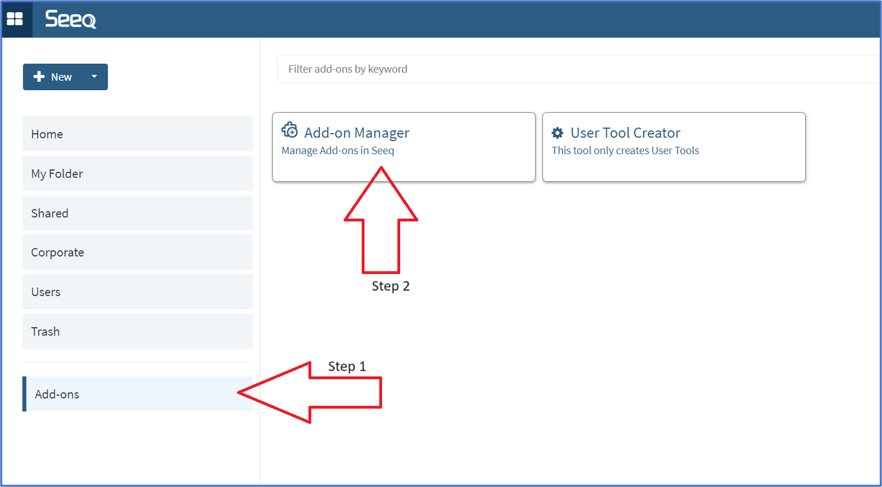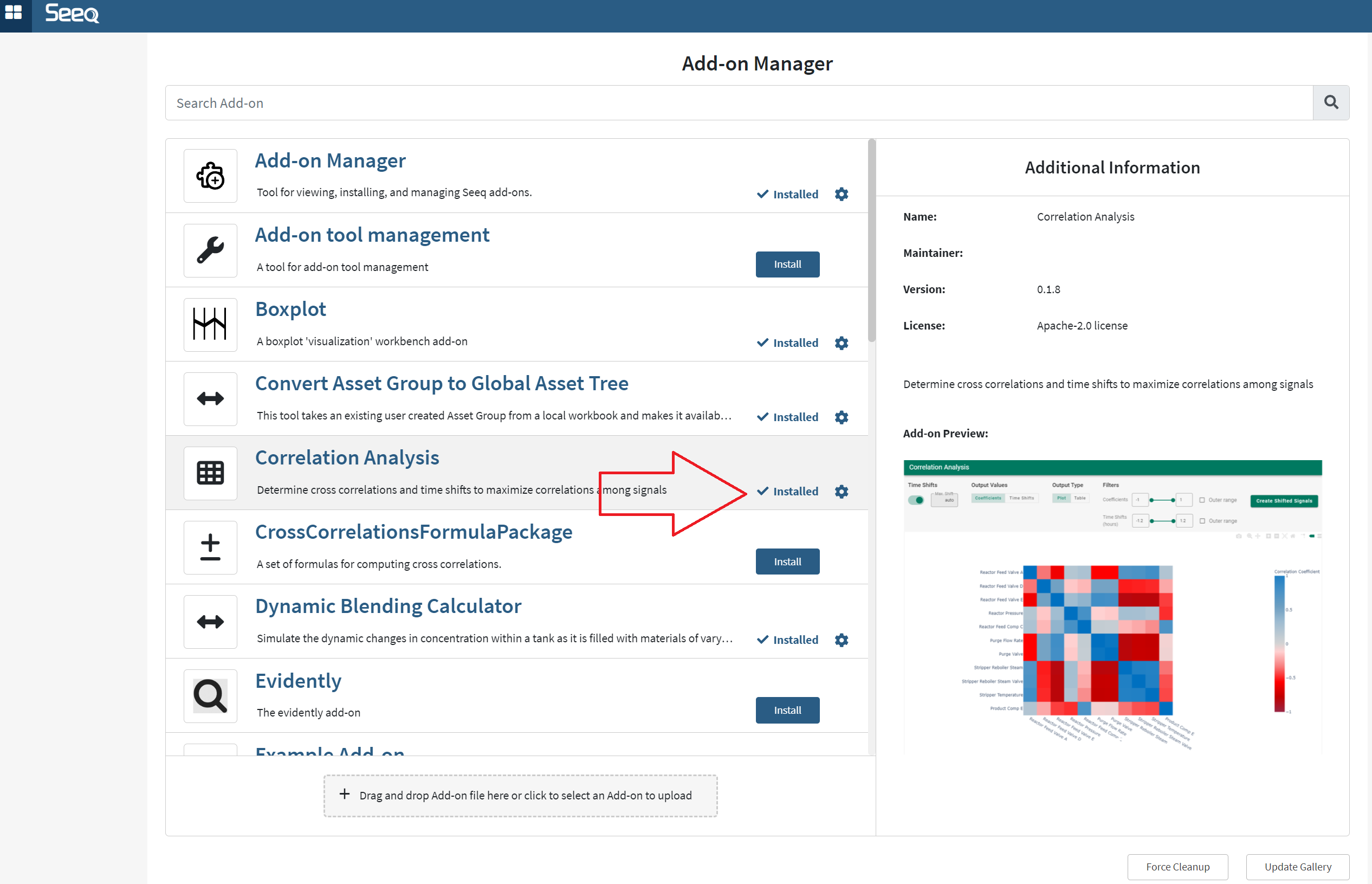Installation
The backend of seeq-correlation requires Python 3.7 or later.
Dependencies
See requirements.txt file for a list of
dependencies and versions. Additionally, you will need to install the seeq module with the appropriate version that
matches your Seeq server. For more information on the seeq module see seeq at pypi
User Installation Requirements (Seeq Data Lab)
If you want to install seeq-correlation as a Seeq Add-on Tool, you will need:
Seeq Data Lab (>=R56)
seeqmodule whose version matches the Seeq server versionSeeq administrator access
Enable Add-on Tools in the Seeq server
Installation Steps
Seeq Add-on Installation via Add-on Manager (Recommended Method)
The seeq-correlation Add-on can be installed via the Add-on Manager in the home page of the Seeq server. Please refer to our knowledge base for more details on Add-on Manager here.
From the Seeq home page, click on the “Add-on” icon at the left of the screen and then click the “Add-on Manager” icon in the new buttons displayed.

Now your in the Add-on Manager you will get a list of all the Add-ons available to you. Click on the “Install” button next to the seeq-correlation Add-on.

After some time the “Install” button will change to “Installed” with a tick next to it and the Add-on will be available to use in Seeq Workbench.
Upgrading the seeq-correlation Add-on
If there is a new version of the seeq-correlation Add-on available, you will see an “Upgrade” button next to the add-on in the Add-on Manager. Click on the “Upgrade” button to upgrade the add-on to the latest version.
Seeq Add-on Installation via Terminal Window (Depreciated Method)
The latest build of the project can be found here as a wheel file. The file is published as a courtesy to the user, and it does not imply any obligation for support from the publisher.
Create a new Seeq Data Lab project and open the Terminal window
Run
pip install seeq-correlationRun
python -m seeq.addons.correlation [--users <users_list> --groups <groups_list>]